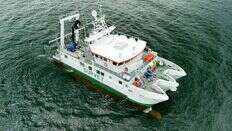- Seabed surveys for the Baltic East project lasted over 15 weeks.
- Over 1,200 meters of geotechnical boreholes were completed.
- The project aims for nearly 1 GW of installed capacity.
- ORLEN Group plans 12.8 GW in renewable energy by 2035.

Seabed Surveys Completion
Preliminary seismic and geotechnical seabed surveys for the Baltic East offshore wind project were conducted over four months by ORLEN Petrobaltic, Geofizyka Toruń, and MEWO. The surveys covered over one thousand kilometers of seismic lines, soundings, and boreholes, providing essential data for the project's next stages.
Survey Details
Three specialist vessels operated across the planned wind-farm area, collecting data for accurate seabed geology modeling and design documentation. Multichannel 2D seismic surveys by Geofizyka Toruń focused on identifying soil strata and potential geohazards. MEWO conducted UXO surveys to assess seabed clearance, identifying magnetic anomalies to ensure safety during geotechnical investigations.
Geotechnical Investigations
ORLEN Petrobaltic completed over 1,200 meters of geotechnical boreholes and soundings, reaching depths of up to 80 meters below the seabed. Laboratory analysis of soil samples and seismic survey interpretation are ongoing to support project development.
Project Potential
The Baltic East project holds permits for grid connection, construction, and cable maintenance. It aims for nearly 1 GW of installed capacity, enough to supply around 1.25 million households. The ORLEN Group plans to bring Baltic Power online in 2026, adding 1.2 GW to Poland's power system, and holds licenses for additional offshore wind farms, targeting 6.4 GW of capacity.
